Editor’s Note: Alexandra and David are members of LTV’s sponsored content team, The Leisure Explorers. Do you own a Leisure Travel Van and enjoy writing? Learn more about joining the team.
“How do you afford to do this?” asked an elderly gentleman pumping gas into his dark blue SUV, mid-morning on a hot summer’s day.
We were on the other side of the island, pumping some diesel into our Leisure Travel Vans Unity IB, and we had noticed him admiring the sleek lines of our RV, our home-on-wheels, our MoHo, for short. (‘Cause we all name our RVs, right?)
Dave was seizing the opportunity to clean the windshield, and I, not to be outdone, was seizing the opportunity to grab what little garbage we had and dump it in the trash bin provided between the two pumps. We took the time to answer some of his questions about mileage and comfort levels.
“Does it really hold a bed?” he asked incredulously.
“Sure does!” I replied, then added “We have a walk-around queen size bed, a full bathroom and shower, and a very comfortable galley!”
And then, inevitably, the conversation turned to dollars.
“Well, buying the LTV was a bit on the expensive side,” Dave admitted, then continued, “but travelling around, exploring, and adventuring is surprisingly affordable, and with this Leisure Travel Van, so luxuriously comfortable!”
We chatted a bit more, connections forged over fuel. Then, due to some anxious people waiting in line behind us, we waved our good-byes as we each continued on our way.
We are Alexandra and Dave, Leisure Travel Vans Ambassadors and Explorers. We are part-time full-timers, which means that when we head out adventuring, we do it on a full-time basis, but we do it part-time of the year. In case you haven’t read our posts before, this is how we came to be LTV owners.
Everyone drives and lives differently as they Adventure On On. With increasing kilometres and after every trip, week, month, and season, we’ve learned how we travel, what we like, what works and doesn’t work for us. And as many conversations as you have with others, as much research as you do, it’s ultimately your own road to drive. Our lifestyle may or may not compare to yours. Our experiences may or may not help you travel or budget your future trips. We hope, however, that the information below may provide some food for thought – maybe even some Dollars and Sense?
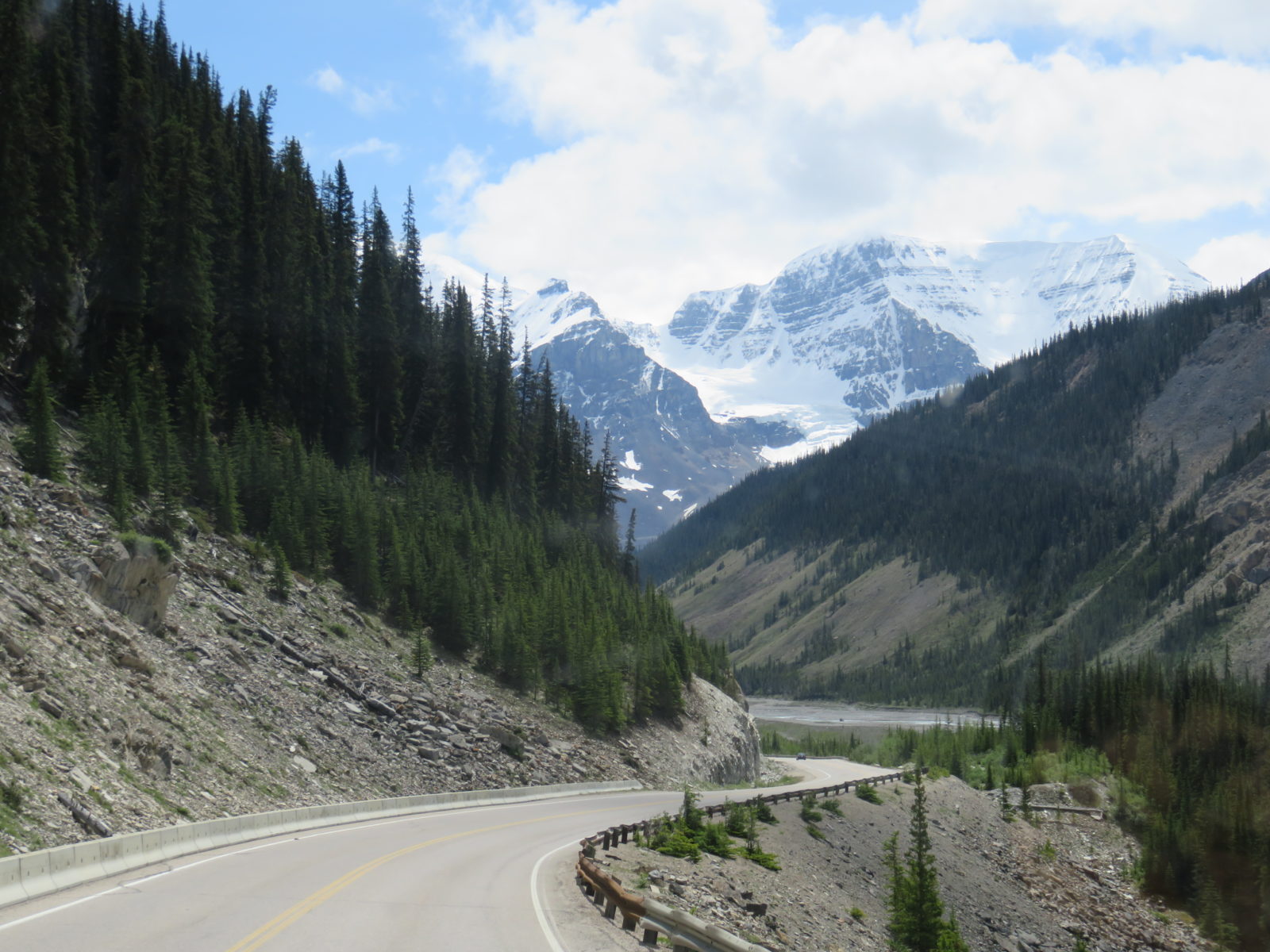
How We Track our Travels, and Our Dollars
As we settled back into the comfort of our seats that day and allowed the map to tell us where to go, we started our own conversation about our recent conversation with the gentleman at the fuel pump. We talked about how often we get asked what our lifestyle costs. The discussion of dollars is always a touchy subject, as everyone has their own preferred way of spending, and rightly so. But how dollars are spent is a topic that inevitably arises ‘round every campfire and in almost every single conversation we have with admirers of either our lifestyle or our home-on-wheels.
I reached for the journal and pen I keep on the dashboard, first, to record the amount of fuel we had just purchased, and second, to do a simple review of our previous week of traveling expenses. I read out loud:
“Four nights ago we left ABC campsite, where we did our laundry, which was $4.00. Then we overnighted at Walmart, then at the casino – those were both free. Last night we stayed at XYZ campground, where we emptied our holding tank and filled up with water, in order to be ready to head to our friends’ in Key West for her surprise birthday party.”
Perusing that last week of details led me to flip the pages backwards through the previous couple of weeks and months, reminiscing over the spending realities of the adventures we were having.
The God’s honest truth? It’s all a matter of preference and personal lifestyle. I don’t need to “justify” my expenses to you, nor should you have to do so to me. We all live on the edge of what we earn, and if you have an income twice that of mine, you’ll probably spend and travel differently than me, and vice versa. No ands, ifs, or buts about it: straight Up Dollars and Sense here.
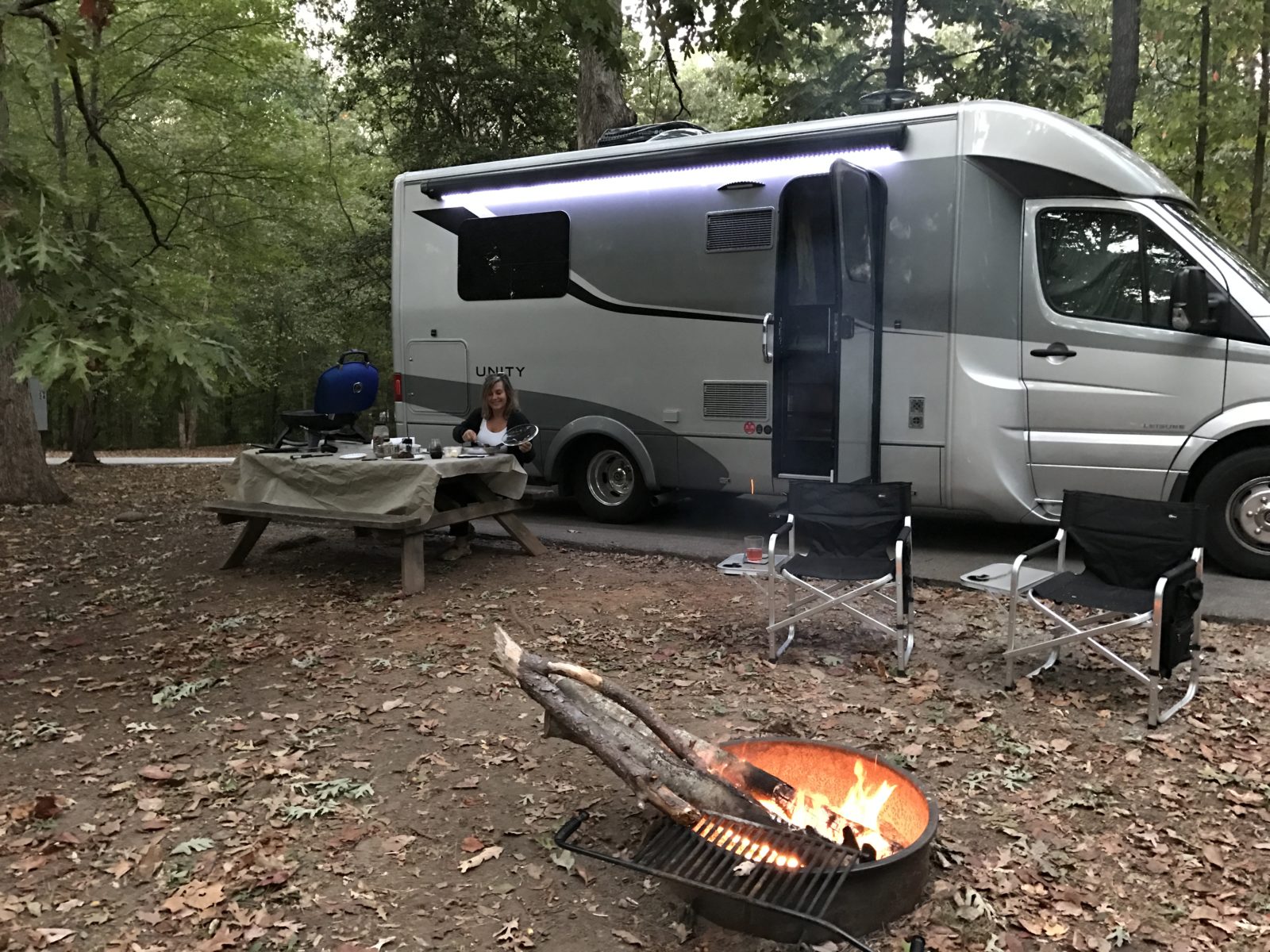
So on the dashboard of our MoHo is a hardcover paper journal, a gift from Leisure Travel Vans. You can buy a cheap version at The Dollar Store, you can buy an expensive leather bound journal with embossed paper from Amazon, or you can keep an e-version on your tablet of choice. There’s no right way or wrong way; it’s all just meant to make life easy-peasy and work with your personal habits. I found that I preferred the old-fashioned easiness of pen and paper, most importantly for one reason and one reason only: when we spend time with friends, or create new friendships, I ask them to sign our book with a sentence, comment, or paragraph, and maybe even their address or contact numbers. They gladly do this, and so this journal becomes not only a record of our financial data and a tracking of our travel locations, but a treasured keepsake of reunions and friendships that have now become recorded memories.
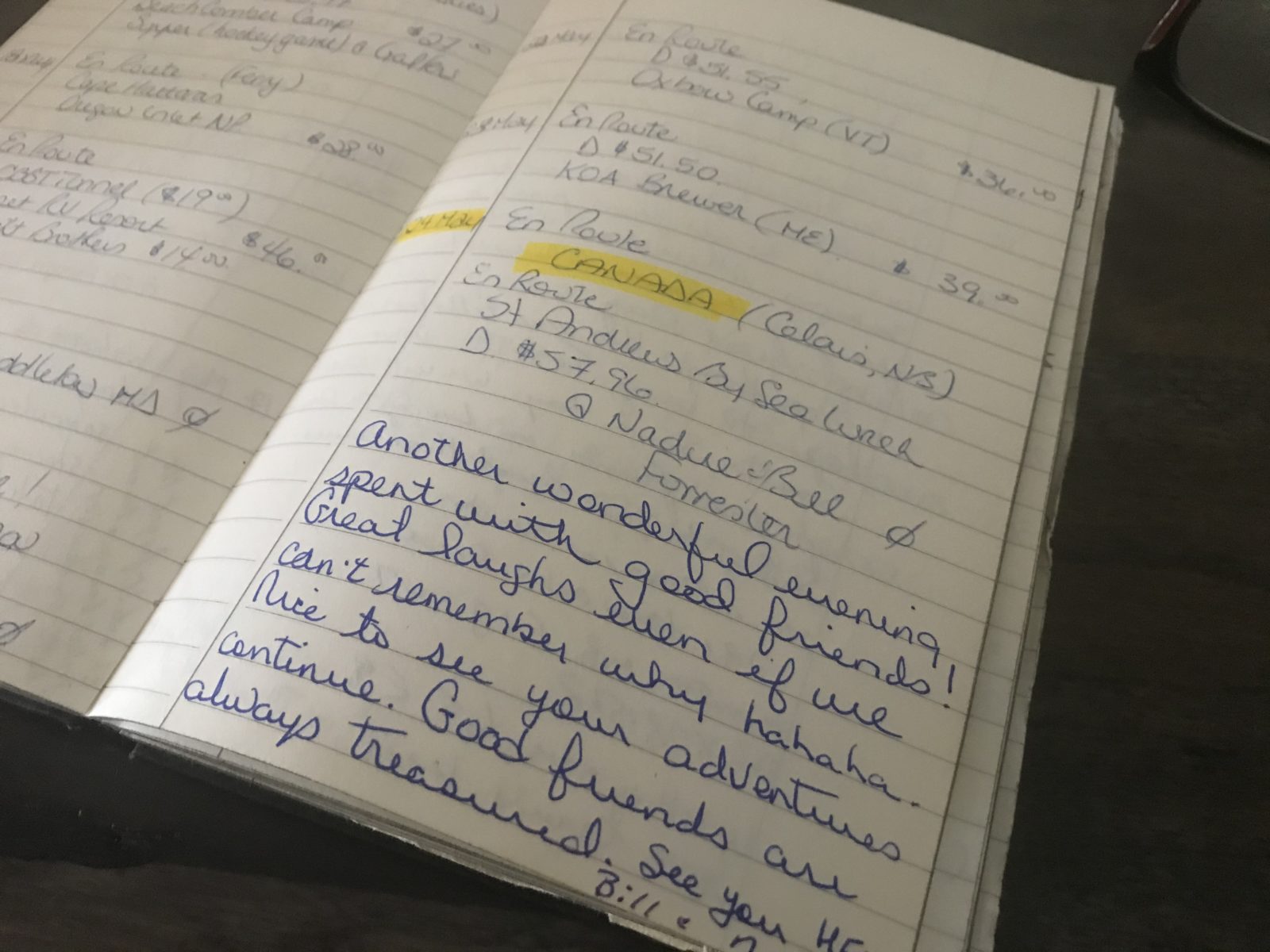
This journal can be as complex as you want it to be, or as simple as the information you want to extract from it. Mine both evolved and devolved with time. By that I mean that I used to record the price per gallon/litre of fuel, and found that, for us personally, that wasn’t a needed or wanted point of reference. So, I stopped. However, after we experienced a discrepancy between the purchase amount at the pump and the amount that went through on the credit card, I did start keeping the fuel pump receipts tucked into the pages of the journal, until such time as the bill was posted and the charges incurred were final and I could then throw the receipts away.
I used to keep a record of our groceries and restaurant meals, but then found that if I really needed a reference, I could check our banking or credit card information. And really? We need to eat whether we are at home or on the road, so the information really wasn’t that valuable to us. Sure, our habits might change when we’re on the road, in that we might allow ourselves to indulge a tad more (like almost daily ice-cream stops!), but no matter which road we choose, our budget remains the same and is closely related to the dollars we have that week to spend. Common sense for us.
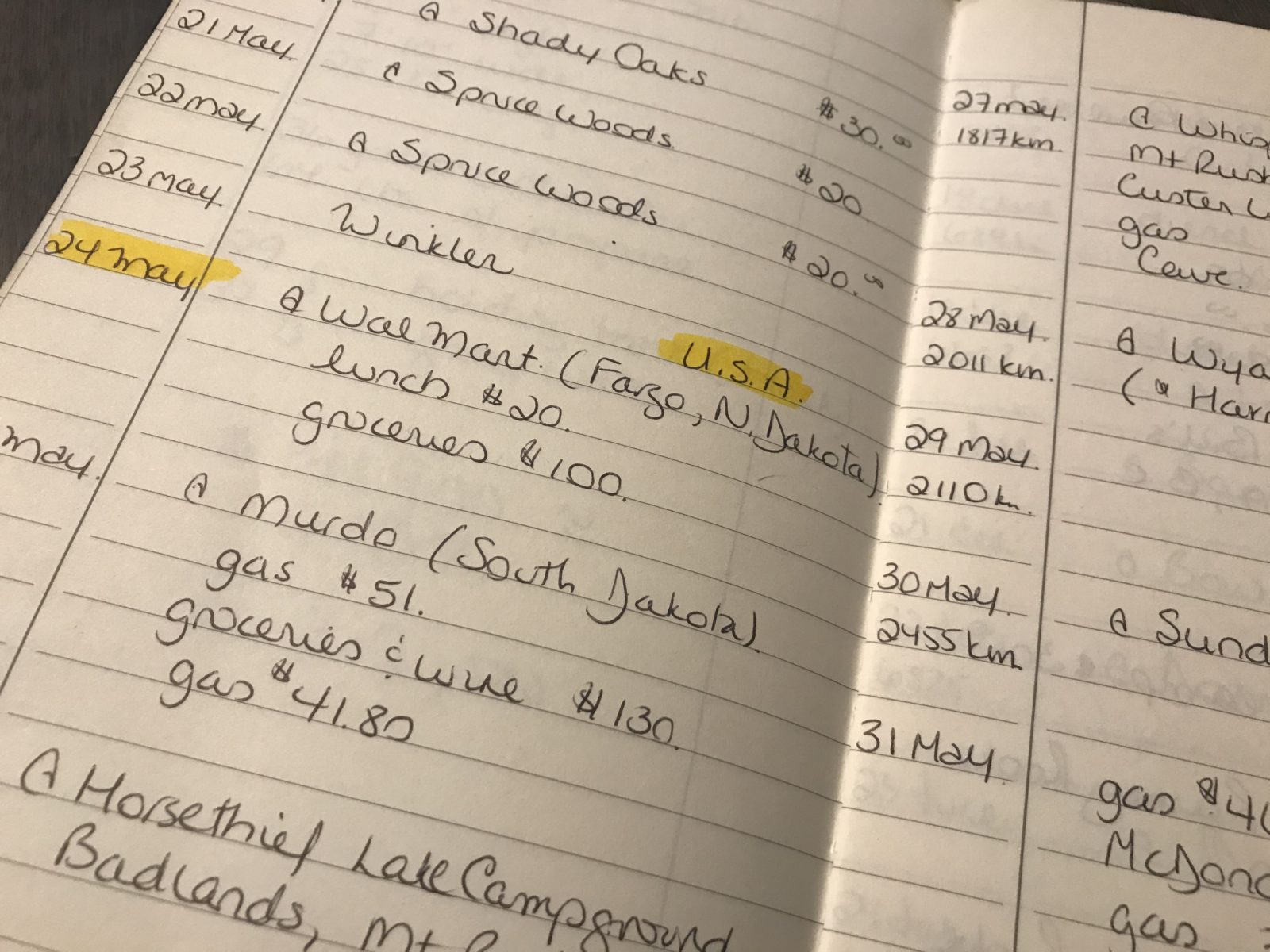
I always note when we cross the Canada/USA border, highlighting the date and location with my yellow highlighter, and that became a useful way to find and quickly answer the question when the border agent asks us about the last time we entered or exited the country.
I note the name of campgrounds we stay at (sometimes rating it), and the cost of the stay. If it was a boondocking or mooch-docking event, I simply put a $0 beside that day’s notation.
And all those pages of handwritten information allowed me to generate the information I needed for this article!
Breaking Down a Season of Travel Costs
I tabulated the following data for one of our seasons:
| Start of season | May 19 |
| End of season | October 20 |
| Total RV time | 155 days |
Next, I looked at some of the basic costs for the season.
Overnight Stays
52 nights stayed in campgrounds: $1,235.00
Disclaimer Number One: In all my efforts at keeping track of dollars, I totally neglected to indicate what was in Canadian dollars (eh?) and what was in American dollars. I’m sure that the difference in exchange rates won’t break your budget, and if you continue reading this, you’ll get the dollars and sense of the message I’m trying to convey.
Disclaimer Number Two: Camping expenses will differ for you and for me. There are so many factors here that will influence your camping costs. Personally, we prefer state parks to KOA-style, full-amenity places. Because we were relocating our MoHo that year, we didn’t take advantage of long(er)-term stays in one place, which given weekly or monthly rates would’ve saved us some dollars per night. And because we can boondock effortlessly in our LTV, even while in a campground, we can save some dollars by getting a camping site without hookups and using the campground for dumping/water facilities upon arrival and departure, thus making our stay cheaper. Or, sometimes we go whole-hog and get a site that’s totally plugged-in and pumped-in… like that time we wanted to watch the hockey playoffs and chose a fully equipped campsite, cable included. It was still cheaper than the alternative of going to a sports bar, complete with meals and drinks.
The type of campground you choose to stay in (location, type, and amenities), when you’re there (holiday? peak season? weekday vs weekend?), how you stay (with or without hookups?), how long you stay (one night? weekly special?) will all impact your final bill.
Another concept to consider and calculate is whether you are part of a “special” group, such as a senior citizen or military. Discounts can certainly be found and applied. Maybe you are a member of one of the MANY plans available that will save you dollars (but might cost you annual membership costs). In our humble opinion, it sure pays to spend some time analyzing your style before committing to all those groups. We found one that worked for us, and stuck with it. Remember that being a member of the various groups may hinder your choice of stays, or empty your pocketbook with their annual fees, whilst not really being that useful. For example, although we really liked the idea of Harvest Hosts (boondocking in local area wineries or farmers’ fields), with its quite reasonable annual fee, we didn’t sign up. We felt that we wouldn’t use it enough in our types of travels, suspected that although we would be overnighting for free we would still feel “obligated” to buy something in their gift shop (not a problem but needs to be added to the budget), and knew we would still have to find dumping facilities and water hookups, as hosts typically don’t have those.
Looking back at our records, Boyd’s Campground in Key West, Florida, that season was the most expensive we’d ever experienced (almost $100 USD per night). If we’d opened our galley window and reached out, we could have knocked on our neighbour’s RV window. For the second and third nights we were in the area, we decided to boondock on a much quieter neighbourhood street, for free, and in walking distance of where the birthday celebrations we were there for were being held.
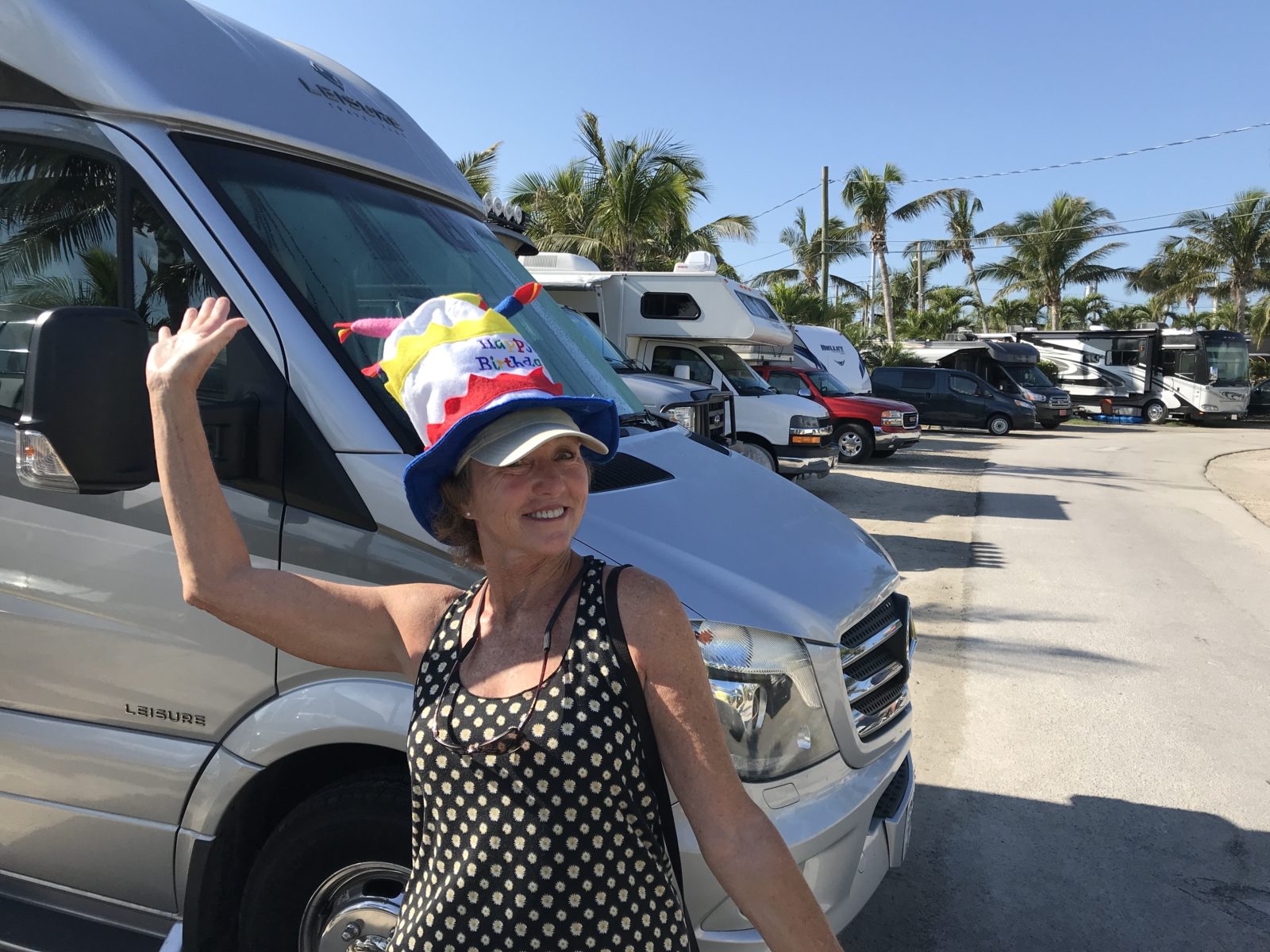
62 nights spent boondocking: $0.00
Disclaimer: Boondocking is technically not really free. Yes, you can overnight for free (in the RV you own, or lease, or are repaying the bank loan for). You can do this for 2-4 days before you have to empty your tanks or fill up your water. Depending on how many sunny days you get, you have to charge up your batteries via your solar panels, and you may still need to run your generator, which uses fuel. And no matter where you are, you’re always using up your propane as well. See how quickly the sense in those dollars get complicated? However, technically and for the purposes of this article, we are deeming that boondocking is staying somewhere “for free.”
41 nights spent mooch-docking: host gifts
We are so fortunate to have so many friends all across the miles of highways and quaint towns in states and provinces that we travelled, and it was very hard to pass through a town without stopping in and saying, “Hey, how you doing?”
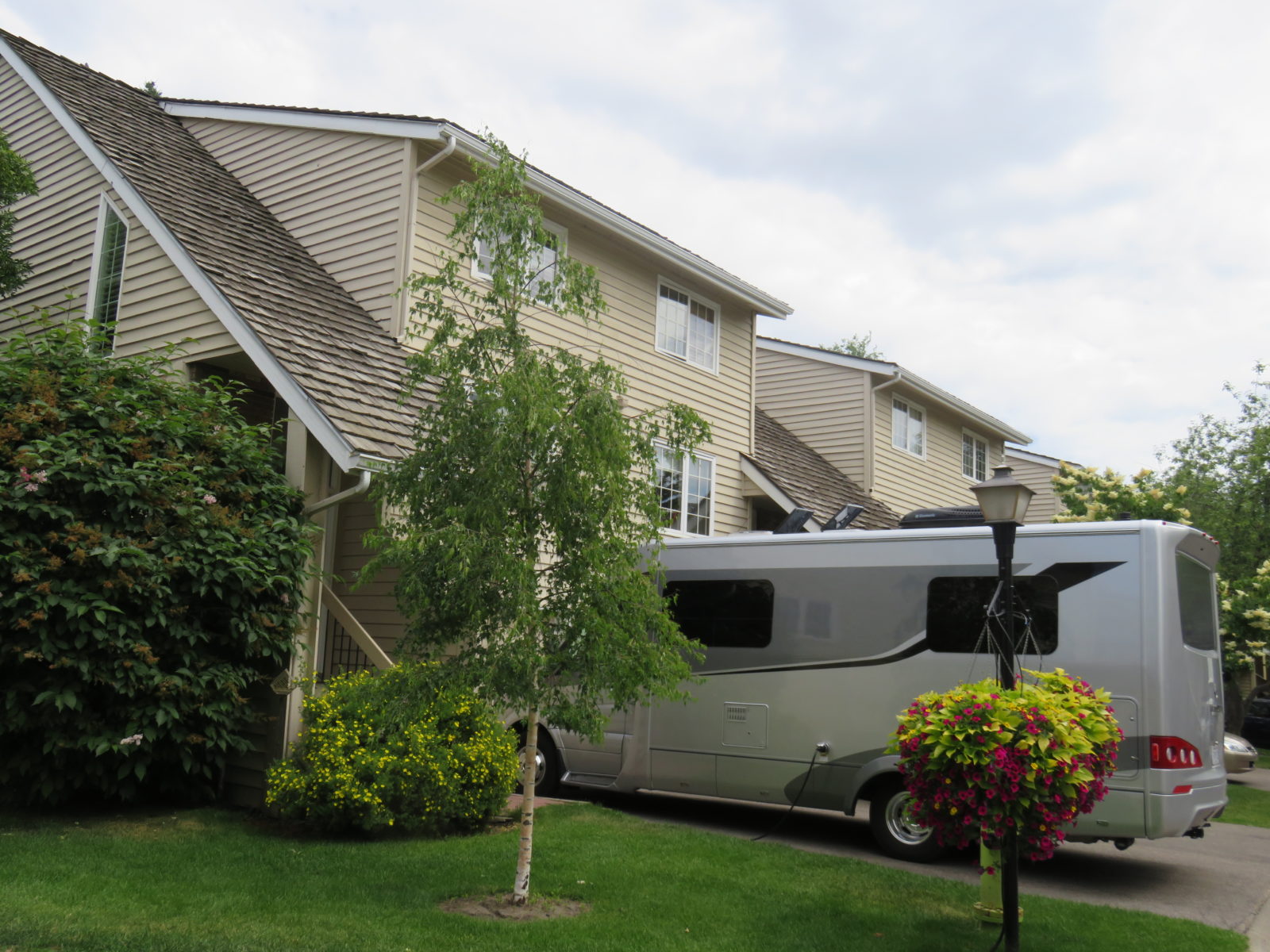
Having a compact Leisure Travel Van allowed us, in almost all instances, to park easily and effortlessly in the driveway, and, much to the angst of our hosts, stay in our own home and sleep in our own bed – albeit in their driveway. If the neighbours only knew!
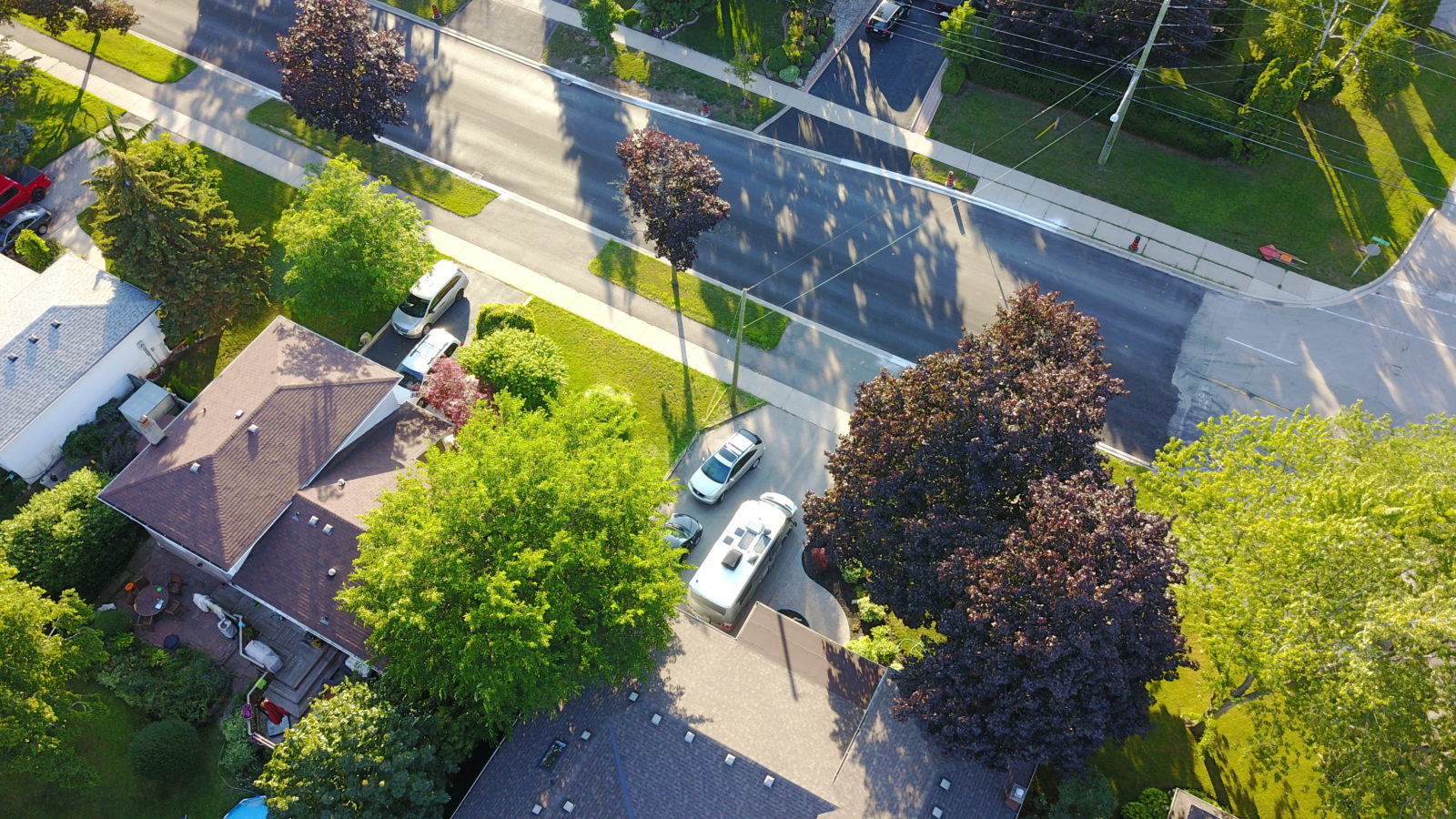
However, we made sure that we always had a wee gift for the hosts, as a thank you offering. We may use the term mooch-docking, we just don’t want that term to be synonymous with our arrival!
Total cost: $1,235.00 + host gifts
Diesel
Disclaimer on the fuel: I also regrettably forgot to note which of our diesel purchases were in American dollars or Canadian (eh?) dollars.
Total cost: $3,024.61
Propane
At the end of the season, we always store the RV with a full tank of propane so that we start the next season with a full tank, ready to go. To note, propane is considerably cheaper in the United States, not to mention easier to find.
Total cost: $28.00
RV maintenance
This was all simply following the normal Mercedes Planned Maintenance Schedule. Our Unity was new, and over our first three years we had absolutely no warranty issues or costs or repairs to the rig itself.
Total cost: $425
Insurance
This is dependant on who you are, where you live, and your personal circumstances.
Total cost: ?
Adding it All Up
| Camping | $1,235 |
| Diesel | $3,024 |
| Propane | $28 |
| RV Maintenance | $425 |
| Admission Costs | n/a |
| Food/drinks | n/a |
| Insurance | n/a |
| Total costs over 155 days | $4,712 |
We’re retired. We live on a fixed income. We’re not rich, but adventure is in our blood. We’re not here to tell you what our budget is, because that amount may or may not work for you. We do have a budget that allows for flexibility and fun. Sometimes we get led astray with that extra invite, drinks that lead to dinner out, and sometimes we choose to spend an extra night or two boondocking, especially if it means we can pay a hefty admission price to somewhere we’d like to visit, like the Biosphere in Arizona!

The Dollars and Sense to that statement is that if you want to do something or go somewhere, you’ll find your own way to make it happen.
In our case, the basic cost to travel over 155 days was $4,712. I excluded food/drinks, miscellaneous purchases, and admission prices, because they are really individual preference and choices. I think that ultimately what people are asking is not how much it costs, but how they can make our lifestyle happen in their own life. And that’s a whole different set of words to write.
We sure hope that the records of our Dollars, intermingled with some of our Sense, as we’ve lived and travelled in our most favourite vehicle, the Leisure Travel Vans Unity IB, for 155 days in one of our seasons, will be somewhat helpful to your planning and dreaming purposes.



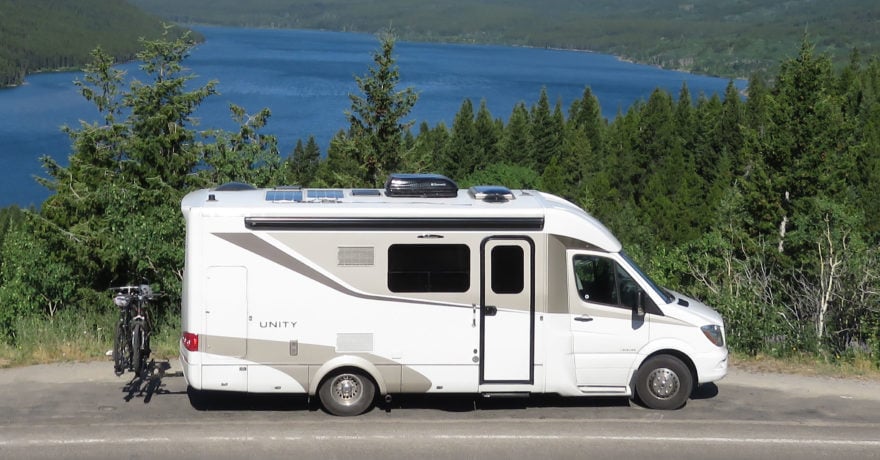
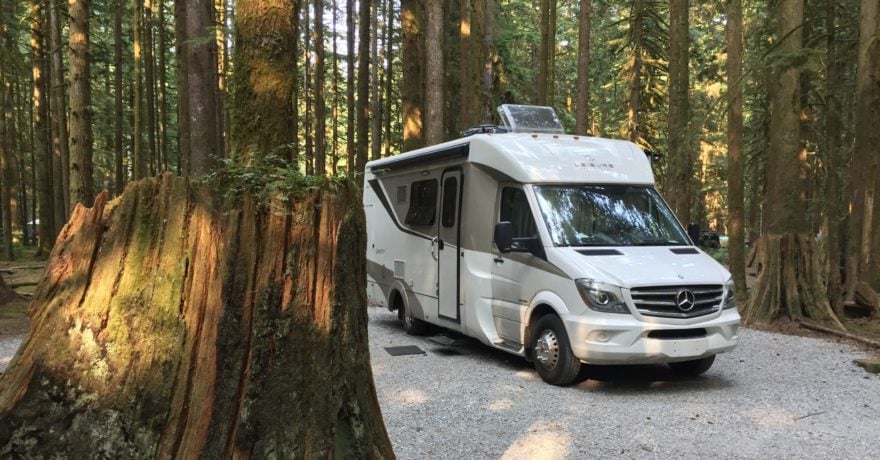
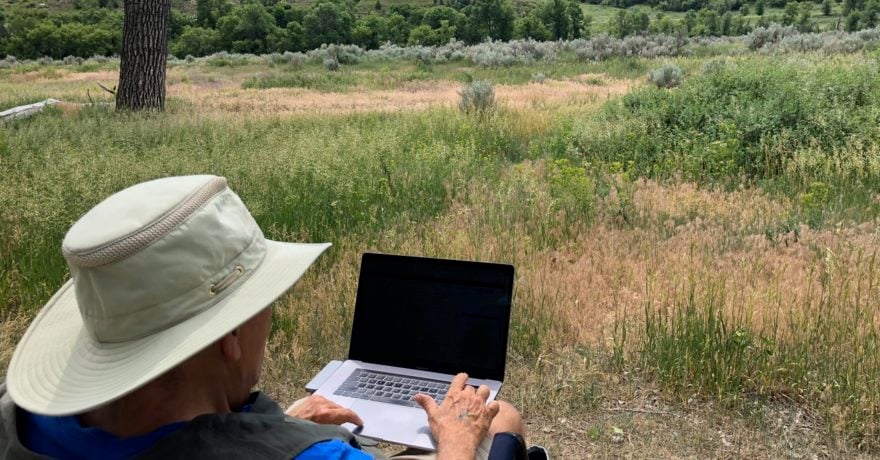
Comments